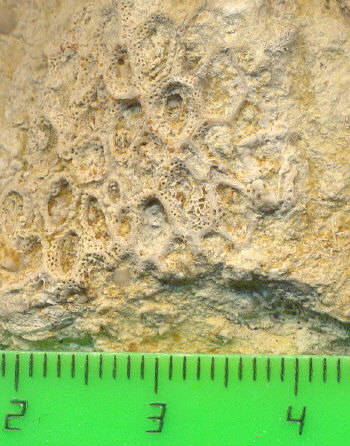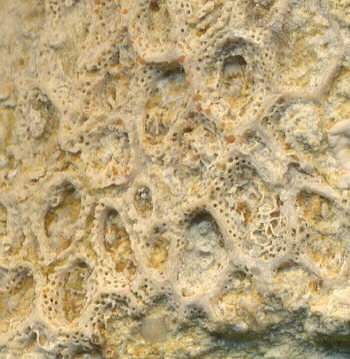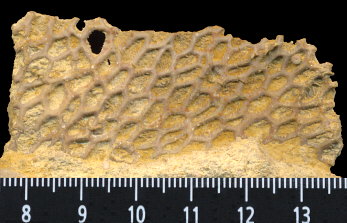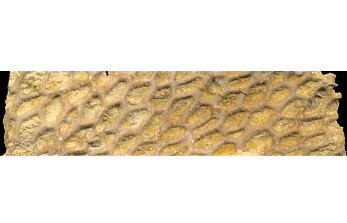Goniocladia subpulchra Schulga-Nesterenko, 1955
Click on pictures to magnify
Discussion:
A beautiful bryozoan specimen with fenestrate growth
condition and many small
chambers on each branch. The chambers were occupied by zooids of the colony
and are seen as small pits on either side of the ridges. The lower images
show the
under surface of the colony.
Viewer Comments:
This bryozoan is distinctive in having thick branches
that are intergrown in a
fenestrate shape and the openings (fenestrae) are polygonal in shape. Although
Goniocladia has a colony shape similar to that of the fenestellid bryozoans,
it is not related to them; Goniocladia is a cyclostome bryozoan, not
a fenestellid
bryozoan. The similarity in shape is an example of convergence in form as
unrelated
organisms produce bodies of similar shape during adaptation to the same environmental
conditions: a concept known as homeomorphy.
Tom Yancey
Go-Back
Phylum
Ectoprocta (bryozoans)
Fossil Menu
Site Search Engine
search Carboniferous fossils of Russia or the Web



